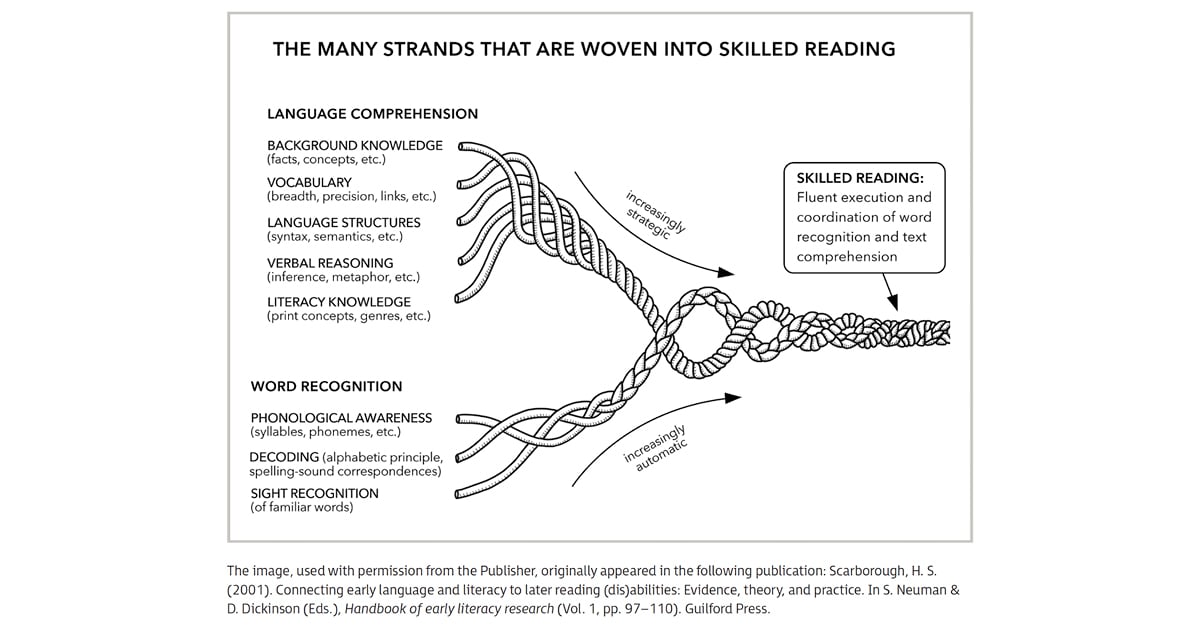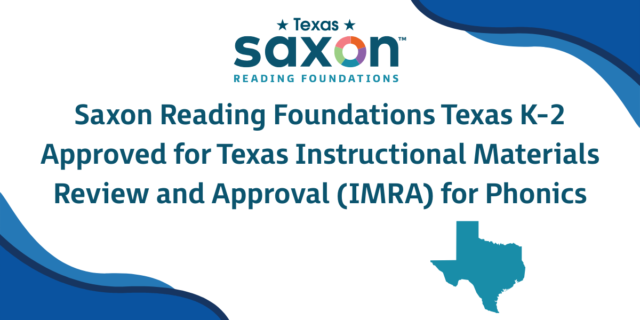
Saxon® Reading Foundation’s approach to teaching foundational literacy is grounded in the latest science of reading and cognitive science research. This K-2 supplemental program, designed to complement a core literacy curriculum, focuses primarily on teaching phonemic awareness, phonics, spelling, and fluency while building children’s decoding skills. As children begin to establish a solid foundation in early literacy, Saxon also integrates the development of vocabulary and comprehension skills.
Offering systematic, explicit, and cumulative instruction, Saxon Reading Foundations nurtures essential early literacy skills by prioritizing phonemic awareness, phonics, decoding, spelling, and fluency. Daily skill reinforcement is achieved through diverse practice opportunities and continual review. Through an incremental development approach that includes progressively challenging content, Saxon ensures students achieve reading proficiency by third grade.
Explicit and Systematic Phonics Instruction
The program includes a grade-level appropriate scope and sequence that outlines the skills taught each week, ensuring the skills are presented in a logical, building sequence. This structure allows teachers to easily track progress, making it clear how each lesson’s content builds on the previous one. The scope and sequence breaks down each lesson into the following components:
- Lesson Warm-Ups: Each day’s lesson begins with activities that review previously taught material and prepare children for new learning.
- Options for Differentiation: Small-group activities at the end of each lesson provide support for students at three different skill levels.
- Sight Words: New Increment sections introduce sight words, decodable text reinforces understanding, and daily Sight Word review in the Lesson Warm-Up builds automaticity in reading.
- Phonemic/Phonological Awareness: Phonological awareness activities include words, syllables, onsets, rimes, and phonemes. Phonemic awareness focuses on individual sounds in words.
- Daily Letter, Spelling, and Sound Review: Deck cards help reinforce letter-sound correspondence, sight words, affixes, and meaning.
- Review: Worksheets provide students with opportunities to apply what they've learned, while teachers can track students' daily progress.
- Fluency and Decodable Readers: Readers give children a range of reading opportunities throughout the year.
Saxon and The Structured Literacy Framework
Saxon Reading Foundations builds foundational literacy skills with a unique, evidence-based method. The program offers systematic, explicit, incremental, and cumulative instruction with constant application and review across early literacy, specifically targeting phonemic awareness, phonics, decoding, spelling, and fluency. Built-in instructional support and optional, detailed scripting provide scaffolding as new concepts are introduced, allowing teachers to teach phonics, spelling, and handwriting seamlessly.
The Structured Literacy Framework highlights the importance of developing proficient readers by ensuring students have a strong command of both language comprehension and structure, along with essential word recognition skills. Saxon focuses on the elements of word recognition, laying the groundwork for language comprehension and helping to cultivate proficient, critical thinkers.

Phonological and Phonemic Awareness in Saxon Reading Foundations
Saxon Reading Foundations ensures that students develop the phonemic awareness essential for reading acquisition. The program follows the gradual release of responsibility model, providing opportunities for multisensory instruction that engages all the senses and offering immediate corrective feedback.
Phonological and phonemic awareness activities are embedded into all Kindergarten lessons and the first 70 lessons in Grade 1. The phonemic awareness instruction in Grade 2 is both comprehensive and adaptable, covering fundamental to advanced skills. It spans activities on key phonemic awareness concepts, and teachers can modify instruction based on ongoing assessment to meet the needs of individual students. This flexibility ensures that students develop critical skills and progress toward becoming proficient readers.
Learn More About Saxon Reading Foundations
Saxon Reading Foundations is a supplemental resource for grades K–2 that explicitly teaches phonemic awareness, phonics, and fluency. Backed by scientific research, this program has been shown to be effective across various student populations, regardless of ability level or socioeconomic background.
Saxon Reading Foundations primarily targets the decoding component of the Simple View of Reading. It is aligned with the key elements of effective reading instruction—phonemic awareness, phonics, and fluency—as identified by the National Reading Panel (NICHD, 2000). The program also supports vocabulary development and reading comprehension, ensuring students build a solid foundation in their early literacy skills.
***
Editor's note: This post is an excerpt from the report, "Saxon Reading Foundations: Science of Reading Instruction." It's been lightly adapted for format. All research citations can be accessed in the linked full report.


